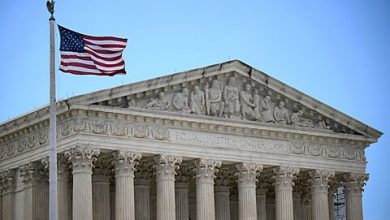Delaying Dollarization Can Put Milei’s Libertarian Agenda at Risk

Daniel Raisbeck and Gabriela Calderon de Burgos
Libertarians around the globe have rightly celebrated Javier Milei’s election as Argentina’s president and his first measures in power. Certainly, Milei’s emergency decree to deregulate large swathes of the economy—from eliminating rent and price controls to instituting an “open skies” policy that liberalized the airline industry—will bring much‐needed relief to a strangled private sector. The same applies to his “omnibus” bill, which would make all state‐owned companies liable to privatization. The latter also includes sound electoral and political reforms, namely ditching proportional representation in favor of a “first‐past‐the‐post” system and getting rid of expensive—and unnecessary— presidential primaries that are mandatory for all parties.
A fair critique of Milei’s emergency decree is that it could be largely undone in the future through a similar decree of a statist, interventionist bent. However, it remains a legal means to govern, requiring the ultimate ratification of Congress and the courts. Moreover, Argentina’s undoubted economic emergency certainly justifies extraordinary measures.
We fear, however, that the main threat to Milei’s agenda is not his legislative modus operandi, but rather his government’s monetary policy. Lest anyone forget, Milei’s flagship policy proposal as a candidate was the full dollarization of Argentina’s economy and the permanent closure of its central bank.
As we wrote on December 14, Milei’s appointment of financial expert Luis Caputo as his finance minister called into question the government’s commitment to dollarize. Caputo had opposed dollarization in the past and, some days before taking office, he purportedly told a group of banking sector representatives that dollarization was off the table. Since then, both Milei and Caputo have affirmed that dollarization remains a part of the agenda. Clearly, however, Caputo’s current plan to stabilize the economy does not involve dollarizing Argentina.
Instead, Caputo has kept currency controls and the official exchange rate vis‐à‐vis the dollar, which was nonetheless brought far closer to the black market or “blue dollar” rate (from ARS $400 to $800, compared to a blue dollar slightly above ARS $1,000 in early December). The adjustment also includes a monthly crawling peg of 2 percent.
Caputo converted the central bank’s outrageous liquidity note debt (Leliqs) into treasury bonds, a necessary measure that slashed the central bank’s interest‐bearing liabilities, which it could pay only through expanding the monetary base. This debt now consists of notes with 24‐hour maturity periods and far lower interest rates (of 100 percent per annum, compared to the Leliqs’ rate of 133 percent). The minimum annual interest rate for fixed‐term deposits was also cut from 133 percent to 110 percent. Given the spread between the yield on Pases and the new rate on deposits, the Argentine Treasury issued short‐term bonds (with 28‐day maturities) yielding over 180 percent per annum and medium‐term issues (1–3 years) indexed to inflation.
Caputo’s aim, in other words, is to dilute Argentina’s mountain of internal debt and eliminate the fiscal deficit by means of inflation levels that run far higher than official interest rates. Caputo announced that inflation would increase during his first public statements as the new finance minister (Milei was inaugurated as president on December 10).
According to official figures, the outgoing Peronist government left an annual inflation rate of 211 percent in 2023, the highest in Argentina since the hyperinflationary episode of 1989-1990.
The logic behind Caputo’s plan seems to be that, as several economists have argued—incorrectly, in our opinion—Argentina does not have enough dollars to dollarize. Hence, it is necessary to delay dollarization and the central bank’s closure until the economy is stabilized. Moreover, since paying for chronic deficit spending with monetary stimulus caused triple‐digit inflation in the first place, it would follow that solving the fiscal problem must be a prerequisite for dollarization, even if this involves high inflation—to dilute the deficit—in the short to medium term.
One problem with this approach is that Milei’s election represented a radical political change, particularly concerning the need to attack the root causes of Argentina’s monetary chaos and tame inflation once and for all. Hence Milei’s proposal to dollarize and shut down the central bank.
Critics of dollarization who still recognize the inflationary problem—a result of governments monetizing chronic fiscal deficits through a subservient central bank—have argued that the better option is to have a serious, independent central bank in charge of Argentina’s monetary policy. As we have argued elsewhere, this argument is at best Panglossian in light of the country’s economic history. Even now, with a fiscally responsible government in charge of public finances, the central bank can hardly be said to be independent because it is being run by Caputo’s former business partner.
More concerning, the central bank is still issuing interest‐bearing liabilities, which grew by 17.6 percent during the first month of the new government. Milei also confirmed that the central bank would soon begin to issue new bills worth ARS $20,000 and $50,000 respectively. Inflation is still increasing rapidly, with a rate of 25.5 percent during the month of December alone.
The inflationary aspect of Caputo’s “stabilization” plan points to its main flaw. In the words of economist Luis Secco, “We started with a high inflation rate, so that if inflation is part of the government’s program, we have a problem.”
To begin with, the government’s measures are already putting the peso under pressure after a 65 percent loss in its value against the dollar in 2023 (including a brief rally in the first days of Milei’s government). That is, Argentines are trying to protect their savings from the government’s strategy. As Bloomberg reported on January 6, “Some local investors are already heading for greenbacks,” causing the parallel rate to weaken. Due to the cut in interest rates, Bloomberg added, “Argentines have pulled money out of deposits and into their checking accounts, adding peso liquidity that stands to put pressure on the currency.” This scenario is already playing out.
At the time of writing, the blue dollar sells for ARS $1,225, with a notable increase in the spread with the official rate in the last five weeks. This is testing Caputo’s attempts to protect the peso by offering savers the life jacket of high interest rates on 30‐day deposits and longer‐term, peso‐denominated bonds. Another attempt to strengthen the peso involves a new 5 percent tax on dollar withdrawals from the banking system for those who benefited from a tax amnesty announced in December.
From the perspective of savers, however, it is fully rational—and also legitimate—to seek shelter from inflation, a tax that was not approved in Congress.
In a recent interview, Caputo confirmed that the government does intend to honor Milei’s dollarization pledge, but only once his “stabilization plan” has been fully implemented. It is thus clear that Caputo regards dollarization as a far‐off destination, not a point of departure. We believe this approach is mistaken and risks a far more painful dollarization than necessary in the future.
In fact, Caputo’s measures—maintaining capital controls and exchange rate restrictions while letting inflation run high—run directly counter to dollarization, as do all other remaining distortions of Argentina’s foreign trade, such as the dollar withdrawal tax and taxes on imports, which Caputo increased. As economist Alberto Acosta Burneo argues, these measures do little to create confidence and attract dollars into the formal financial system, which is what Argentina desperately needs.
Indeed, there seems to be an inherent contradiction between annual inflation levels headed towards 300 percent, a subsequently weakening peso, and the stated hope to accumulate $30 billion to stabilize the economy, which Caputo considers a prerequisite to dollarization.
In the midst of a much‐needed deregulation spree, it is telling that Milei’s government has not removed trade operations from the control of the central bank, which continues to hold a monopoly on access to the dollars necessary to pay for imports. Ecuador, a country which dollarized in 2000, freed the market for dollars in 1992 by allowing importers to access foreign currency, thereby eliminating the central bank’s prior monopoly. Thereafter, it no longer mattered whether or not the central bank had enough dollars to pay for imports, since importers could acquire dollars on the free market. This did not solve Ecuador’s monetary problems because it kept a national currency for eight more years, but it is a necessary condition for dollarization.
Similarly, as positive as Milei’s elimination of price controls might be, he has not liberalized the exchange rate between the peso and the US dollar, which economist Steve Hanke has called “the most important price in an economy.” This despite the fact that, due to their currency’s volatility, Argentines already have the habit of making economic calculations strictly in dollar terms.
Milei’s opinion seems to be in line with Caputo’s insofar as he has stated that the government’s monetary measures are necessary to avoid a bout of hyperinflation. As economist Nicolás Cachanosky has countered, however, such a scenario can only come about as long as the peso is kept in place.
In fact, the means to avoid hyperinflation is the prompt adoption of the U.S. dollar, ideally with the corresponding closure of the central bank.
Like Caputo’s plan, dollarization can ease the debt burden insofar as it would rapidly bring down interest rates, but only as a result of drastically lowering inflation. Unlike Caputo’s plan, however, dollarization does not destroy people’s purchasing power, but rather has the contrary effect of protecting purchasing power in spite of fiscal profligacy.
As Ecuador’s example shows, dollarization solves the inflation problem promptly. According to World Bank data, the country experienced 96 percent annual inflation in 2000 after dollarizing in January of that year, only for the rate to drop to 38 percent in 2001 and 13 percent in 2002. In the last two decades, Ecuador has had one of the lowest average inflation rates in Latin America (along with Panama and El Salvador, two other dollarized countries). This is the type of turnaround Argentina would experience if dollarization is not delayed any further.
Given the state of Argentina’s economy, no stabilization plan will be painless. Dollarization, however, offers the quickest path to monetary stability. It also would bring a permanent end to Argentina’s constant bouts of double‐and‐triple‐digit inflation.
Without a doubt, Milei’s steps to deregulate and liberalize Argentina’s economy are not only welcome, but of the utmost necessity. But they could prove marginal if he fails to solve the monetary problem as quickly as possible. The clock is ticking.





